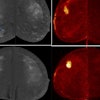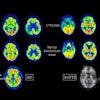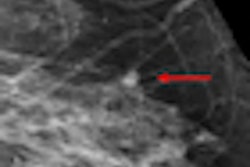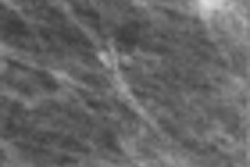
Using computer-aided detection (CAD) as a preliminary reader in screening mammography may reduce radiologists' workload by nearly half. That's the key finding of a large study conducted by researchers from Jerusalem and presented at this month's European Congress of Radiology (ECR).
As it stands, CAD is used as a second reader to mark lesions, and thus the radiologist needs to be the primary reader without using CAD before he or she sees the CAD marks. This creates additional work, according to Charles Florin, PhD, product manager from Siemens Healthcare, who presented the work on behalf of Dr. Richard Lederman. Lederman is from the department of radiology at Hadassah University Hospital in Jerusalem.
The purpose of the study was to determine whether CAD systems could be used to shorten the reading time in screening mammography. The CAD algorithm the researchers used was comprised of two algorithms: one intended to detect masses and the other intended to detect clusters.
The researchers used a Siemens prototype CAD device on approximately 13,000 full-field digital mammography cases, 473 of which were malignant. Of the malignant cluster cases, 95% were correctly identified by CAD. Of the malignant masses cases, 90% were correctly identified by CAD. Of the malignant cases with both masses and clusters, 99% were correctly identified by CAD.
However, as far as normal cases, only 43% were correctly identified by CAD. CAD left a trail of false positives, but not all of them were irrelevant, according to Florin. In some of the cases, CAD pointed out benign lesions.
"Unfortunately, the CAD algorithm does not make a difference between the gravity of the disease," he said. "It only tries to find any region that is suspicious of being a mass, so this is why I said some false positives actually are benign lesions. So the lesions are false positive for CAD, but they're really not that interesting for radiologists or the population."
As far as clusters in normal cases, CAD erroneously identified 9%; it identified 13% for masses and 35% for both.
"It's fair to say ... with this CAD prototype, 43% of the normal cases could be simply not read by the radiologist; however, 1.3% of the cancers with both masses and clusters would be missed, 5% of cancers with clusters, and a terrible 10% of cases with masses [would be missed]," Florin said.
This approach improved the detection process by increasing sensitivity and shortening reading times because the radiologist would basically read the case primarily for one lesion type. Considering only 5% of clusters would be missed, using CAD as a preliminary reader might be warranted for clusters only.
"This approach would be practical for masses only after the algorithm could be improved," he said. "However, the same question remains, basically. With the current algorithm configuration, the reader should search for masses in every case and for clusters only when directed by CAD."



















